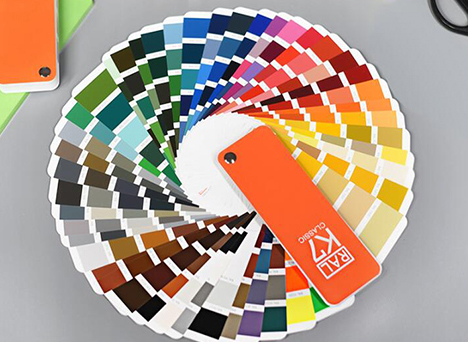The principle of electrostatic powder spraying:
The phenomenon of corona discharge is used to make the powder coating adsorb on the workpiece. The process is as follows: the powder coating is fed into the spray gun by the compressed air gas from the powder supply system, and the high voltage generated by the high voltage electrostatic generator is added to the front of the spray gun. Due to corona discharge, dense electric charges are generated nearby, and the powder is discharged from the gun nozzle. When sprayed, charged paint particles are formed, which are attracted to the workpiece with the opposite polarity under the action of electrostatic force. As the sprayed powder increases, the electric charge accumulates. When it reaches a certain thickness, static electricity is generated. Repulsion does not continue to adsorb, so that the entire workpiece obtains a certain thickness of powder coating, and then the powder is melted, leveled, and solidified by heat, that is, a hard coating film is formed on the surface of the workpiece.
What are the steps in the powder electrostatic spraying process?
(1) Surface pretreatment. Mainly degreasing and rust removal, the method is the same as the pretreatment of applying liquid paint.
(2) Scrape putty. Scrape conductive putty according to the degree of defects of the workpiece, and smooth it with sandpaper after drying, and then proceed to the next process.
(3) Protection (also known as covering). If some parts of the workpiece are not required to be coated, they can be covered with protective glue before preheating to avoid spraying paint.
(4) Preheating. Generally, preheating is not required. If the coating is required to be thicker, the workpiece can be preheated to 180-20°C to increase the coating thickness.
(5) Spraying. In a high-voltage electrostatic field, the powder spray gun is connected to the negative pole, and the workpiece is grounded (positive pole) to form a loop. The powder is sprayed from the spray gun with the help of compressed air, which is negatively charged, and is sprayed on the workpiece according to the principle of opposite sex attraction.
(6) Curing. After spraying, the workpiece is sent to a drying room at 180~200℃ for heating to solidify the powder.
(7) Clean up. After the coating is cured, remove the protector and smooth the burrs.
(8) Inspection. Check the coating of the workpiece, and re-spray any defects such as missing spray, bumps, or needle bubbles.
(9) Defect treatment. Rework or re-spray the workpieces with defects such as missing spray, pinholes, bumps, and bubbles.
